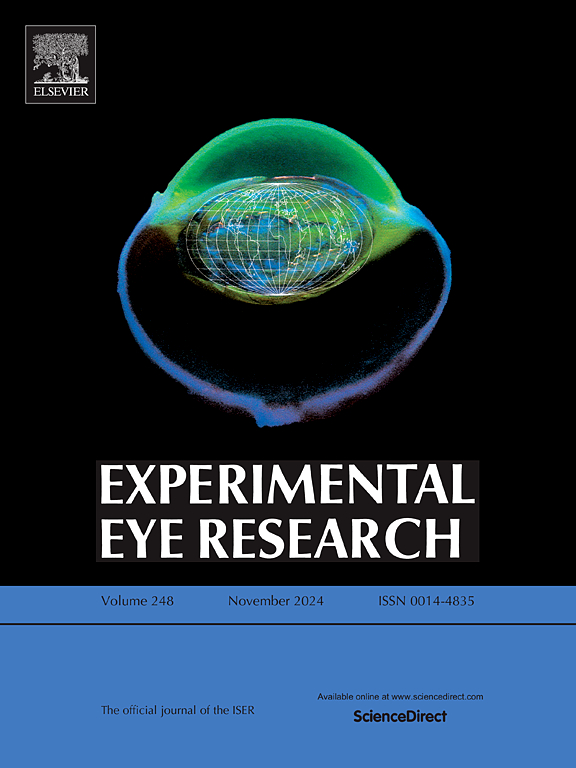Human trabecular meshwork stem cell-derived small extracellular vesicles enhance trabecular meshwork cell survival and proliferation
IF 3
2区 医学
Q1 OPHTHALMOLOGY
引用次数: 0
Abstract
Glaucoma is an optic neuropathy, one of the leading causes of irreversible blindness worldwide. Previous studies in animal models have shown that transplantation of trabecular meshwork stem cells (TMSCs-adult tissue-resident stem cells of TM) promotes TM regeneration and restores intraocular pressure through paracrine signaling. One of the major paracrine signal mediators is the extracellular vesicles. Given the advantages of sEV over cell-based therapies, the current work aims to investigate the potential of TMSC-derived small extracellular vesicles (sEV) in promoting TM cell survival and proliferation using in vitro experiments. TM cells were cultured in TM media and stem cell growth media (SCGM). Phenotypic and functional (sphere formation) characterization of cultured cells revealed that the SCGM maintained stemness with greater functional efficacy. sEV from TM cell (TM media) and TMSC (SCGM) conditioned media were isolated using the ultracentrifugation method. Characterization of sEV demonstrated that the sEV were within the size range of 30–200 nm and poly-dispersive spherical in shape. The TM and TMSC sEV express common exosomal marker syntenin, TM specific exosomal markers-emilin and neuropilin. To check the uptake specificity, the labelled sEV were incubated with different cell types. The varying degrees of uptake of the labelled sEV by TM cells, HLEB3 and 3T3 cell lines implied that TM and TMSC sEV might have varied surface components. The regenerative efficacy of the sEV was assessed in vitro by scratch wound assay, immunostaining for proliferation marker Ki67, and 5′-Bromo-2′-deoxyuridine incorporation assay. The TMSC sEV exhibited better wound healing efficacy by inducing TM cell proliferation. Furthermore, evaluation of the antioxidant potential depicted that the TMSC sEV enhanced TM cell viability under chronic oxidative stress by significantly reducing the intracellular reactive oxygen species. Taken together, our study demonstrated for the first time that the TMSC sEV enhanced TM cell proliferation as well as migration in vitro and attenuated oxidative stress-induced cell death by reducing intracellular reactive oxygen species. Further studies in animal models will pave the way for the potential application of TMSC sEV in glaucoma treatment.
求助全文
约1分钟内获得全文
求助全文
来源期刊

Experimental eye research
医学-眼科学
CiteScore
6.80
自引率
5.90%
发文量
323
审稿时长
66 days
期刊介绍:
The primary goal of Experimental Eye Research is to publish original research papers on all aspects of experimental biology of the eye and ocular tissues that seek to define the mechanisms of normal function and/or disease. Studies of ocular tissues that encompass the disciplines of cell biology, developmental biology, genetics, molecular biology, physiology, biochemistry, biophysics, immunology or microbiology are most welcomed. Manuscripts that are purely clinical or in a surgical area of ophthalmology are not appropriate for submission to Experimental Eye Research and if received will be returned without review.
 求助内容:
求助内容: 应助结果提醒方式:
应助结果提醒方式:


